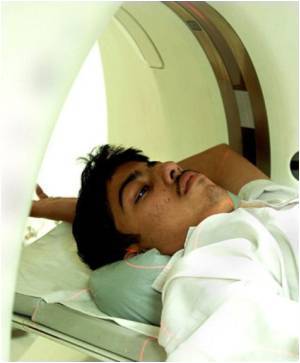Study says in about 40 percent of research participants undergoing medical imaging, radiologists may detect a tumor or infection unrelated to the study

Nicholas M. Orme, M.D., of Mayo Clinic, Rochester, Minn., and colleagues evaluated the medical records of 1,426 research participants who underwent an imaging procedure related to a study conducted in 2004. Each image was interpreted by a radiologist the day it was performed, and an expert panel reviewed all incidental findings that resulted in a clinical action during a three-year follow-up period.
Of the 1,426 research imaging examinations, an incidental finding occurred in 567 (39.8 percent). The risk of an incidental finding increased with age. More incidental findings were generated in patients undergoing computed tomography (CT) scans of the abdomen and pelvic area than in any other imaging procedure, followed by CT of the chest and magnetic resonance imaging (MRI) of the head.
Clinical action was taken for 35 (6.2 percent) of the individuals with an incidental finding; in most cases (26 of 567, or 4.6 percent) the medical benefit or burden of these actions was unclear. However, action resulted in clear medical benefit for six of the 567 patients (1.1 percent) and clear medical burden in three patients (0.5 percent).
"This study demonstrates that research imaging incidental findings are common in certain types of imaging examinations, potentially offering an early opportunity to diagnose asymptomatic life-threatening disease, as well as a potential invitation to invasive, costly and ultimately unnecessary interventions for benign processes," the authors write. "The majority of incidental findings seem to be of unclear significance. These instances represent a dilemma for researchers."
The findings should help researchers identify imaging studies at high risk for generating incidental findings and develop a plan for managing them, the authors conclude. "Timely, routine evaluation of research images by radiologists can result in identification of incidental findings in a substantial number of cases that can result in significant medical benefit to a small number of patients," they write.
Editor's Note: Please see the article for additional information, including other authors, author contributions and affiliations, financial disclosures, funding and support, etc.
"In clinical research, investigators may learn information about a participant that is not pertinent to the research question but that may have important clinical implications for the participant," writes Bernard Lo, M.D., of the University of California, San Francisco, in an accompanying editorial. "Such incidental findings present ethical dilemmas. Although they may offer the possibility of substantial personal benefit to the participant, more commonly they are false-positive findings that lead to a cascade of testing that presents additional risks and burdens."
"When planning a study, researchers need to develop a comprehensive plan for how they will respond to incidental findings, including what findings they will offer to disclose to participants," Dr. Lo continues. "The possibility of incidental findings, and their ramifications, should be part of the informed consent process. The work by Orme et al helps us to start to quantify their impact."
(Arch Intern Med. 2010;170[17]:1522-1524. Available pre-embargo to the media at www.jamamedia.org.)
Editor's Note: Dr. Lo is supported by a National Institutes of Health grant from the National Center for Research Resources and NIH Roadmap for Medical Research and by the Greenwall Foundation. Please see the article for additional information, including author contributions and affiliations, financial disclosures, funding and support, etc.
Source-Eurekalert
 MEDINDIA
MEDINDIA



 Email
Email




